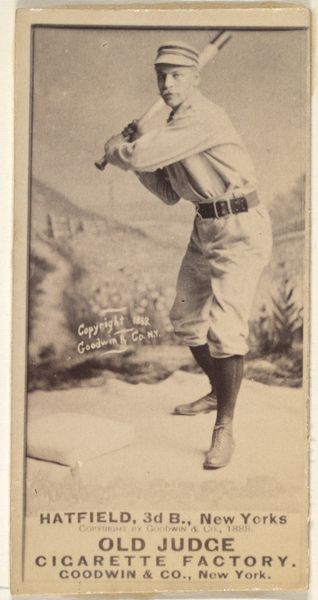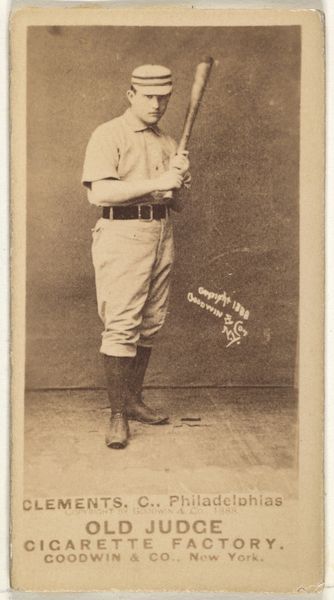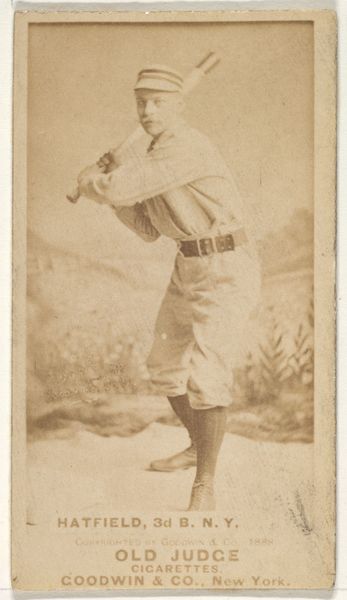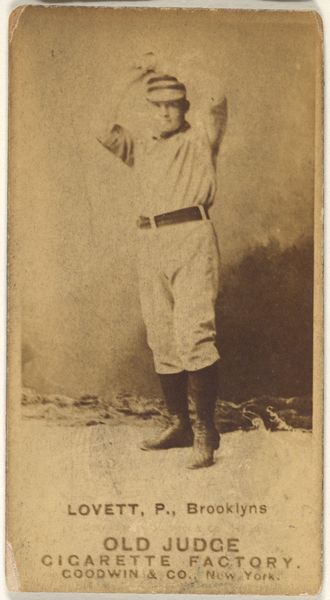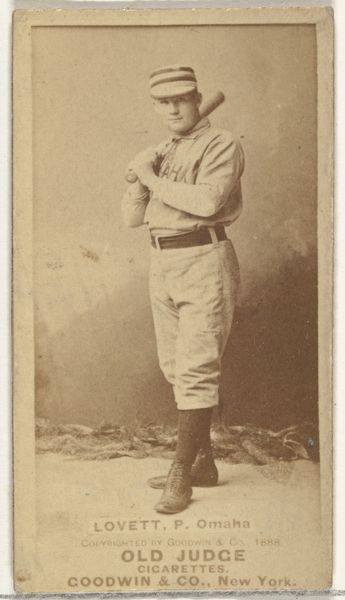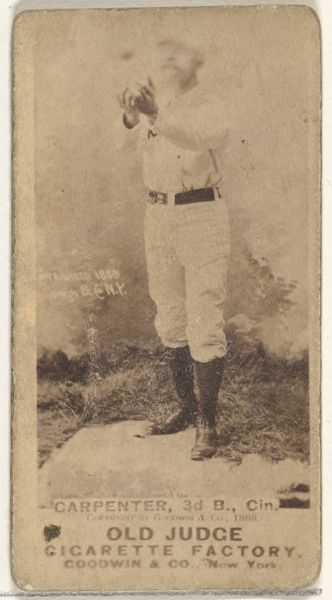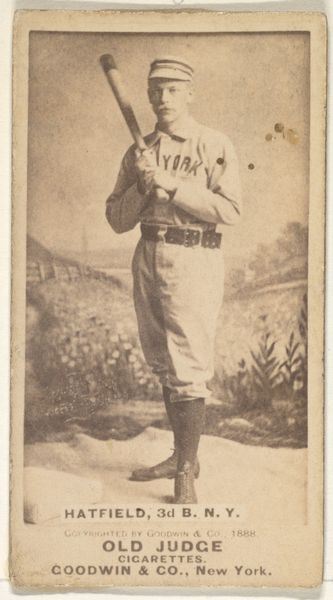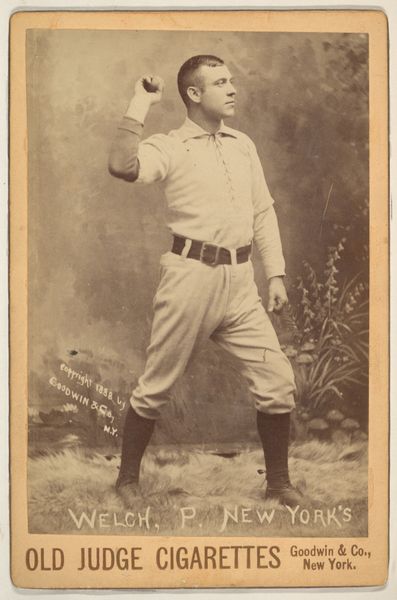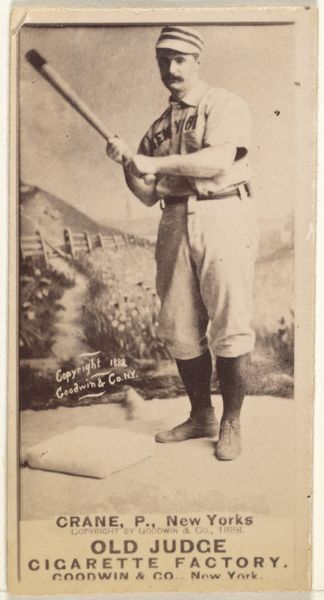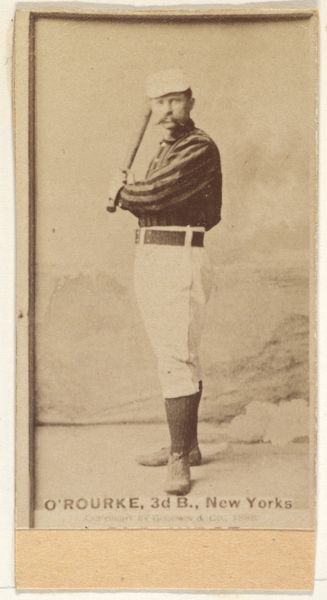
Michael J. Slattery, Left Field, New York, from the Old Judge series (N172) for Old Judge Cigarettes 1888
0:00
0:00
drawing, print, photography
#
portrait
#
drawing
# print
#
baseball
#
photography
#
19th century
#
men
#
athlete
Dimensions: sheet: 2 11/16 x 1 3/8 in. (6.9 x 3.5 cm)
Copyright: Public Domain
Editor: So, this is “Michael J. Slattery, Left Field, New York,” made in 1888 by Goodwin & Company, part of the Old Judge Cigarettes series. It's a photograph, meant as a baseball card it seems, with that sepia tone giving it such a vintage feel. What jumps out is how staged it feels compared to modern sports photography. What do you make of it? Curator: What immediately strikes me is the context of its creation. Consider how late 19th-century commercialism intersects with emerging celebrity culture. Here you have a portrait not commissioned for artistic merit, but serving as advertisement, inserted in cigarette packs. How does the backdrop, which seems painted, contribute to the manufactured image of athleticism, detached from the gritty reality of the sport? Editor: That’s a really interesting point about the staged backdrop versus reality. The idyllic setting feels so at odds with what I imagine turn-of-the-century baseball to have been like. Curator: Exactly. And the text itself – "Old Judge Cigarette Factory" – isn't just incidental; it asserts the card’s primary purpose. Who was it meant to reach and why this romantic, almost pastoral imagery with this working-class sport? This intertwining tells us much about the period’s values and the strategies businesses used to shape them. Editor: I guess it's easy to forget how embedded these images are in the social and commercial networks of their time. I tend to look at them in isolation, rather than as marketing tools. Curator: And what did you learn about your own understanding of art from reflecting on this? Editor: I learned to consider not just what the image shows, but what its presence says about how popular culture was shaped and sold in that era. It's a fresh way to connect to the past through a piece of ephemera!
Comments
No comments
Be the first to comment and join the conversation on the ultimate creative platform.
